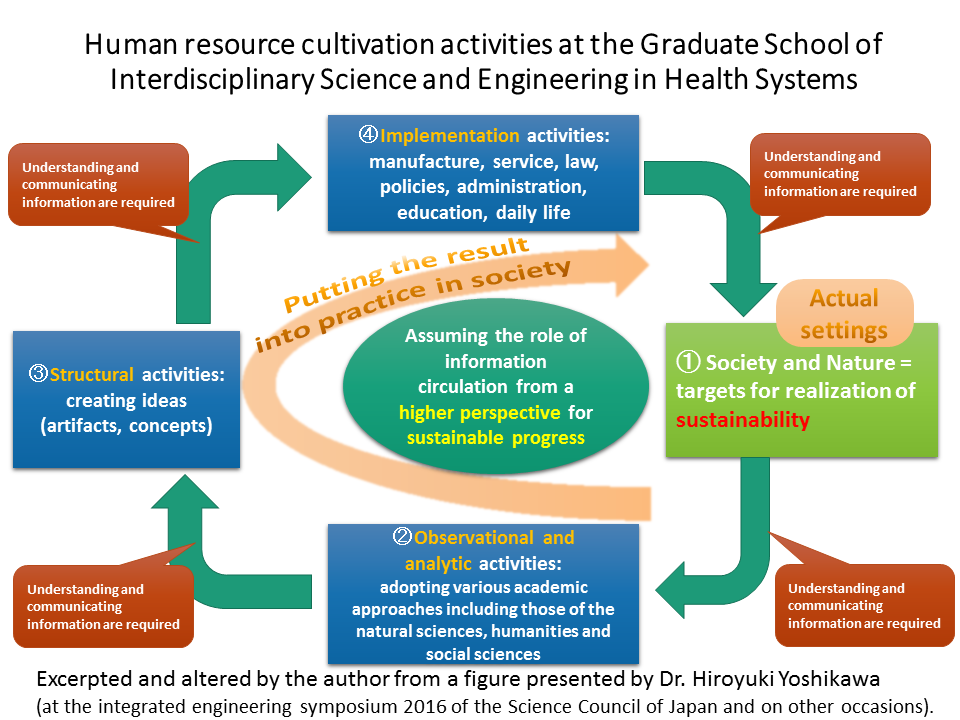This graduate school targets the actual settings of health systems. In other words, we will work not only on medical care that is centered on outpatient and inpatient treatment at hospitals, but also on comprehensive difficulties and issues related to the four inevitabilities in human life (birth, aging, sickness and death). These include medical care service at home, nursing care and preventive medicine for prolongation of a healthy life-span, and the way of life in the terminal phase. In such settings, a number of issues or distressing conditions / worries have been arising day after day, which science and research has yet to understand how to address, because they do not always coincide with theoretical concepts. Such a wide variety of issues awaits solutions for the achievement of greater happiness and well-being for human beings. To move a step ahead toward the solution of these issues, it is necessary for us to intuitively notice and verbalize the distressing conditions in actual settings and also to come up with new ideas based on verbalized findings, and prove them. Such ideas should be related not only to things but also to concepts. For example, they could include a specific new product, a plan for a new system or a framework for collaboration. They could emerge from natural sciences including engineering, or from humanities and social sciences. One of the major roles of the research, science and academia that students should be seeking at this graduate school is to raise the accuracy of such novel ideas, based on reliable proofs.
This graduate school takes the approach of interdisciplinary science. The activities for the solution of issues can be explained with the following cycle consisting of four steps as follows (according to Dr. Hiroyuki Yoshikawa):
- 1) Society and nature (Actual settings),
- 2) Observational and analytic activities: Addressing them through academic approaches,
- 3) Coming up with ideas (products and systems)
- 4) Applying ideas into practice and engaging in appropriate behavioral activities
And then returning to: - 1) Nature and society (Actual settings) (putting the result into practice in society)
Assuming the role of information circulation from a higher perspective for sustainable progress

The process in which the ideas embodied through this cycle are applied to the natural world or human society is called “putting the result into practice in society.” The less successful ideas will be shaken out as the cycle keeps rotating, and the remaining ones should be adopted and take root as a means by which human beings can improve nature and society. We need as many human resources as possible who are capable of facilitating the rotation of this cycle.
Our graduate school aims to cultivate such human resources which are capable of exploring issues arising from actual healthcare settings, in cooperation with a large number of people working in healthcare facilities and relevant organizations, creating ideas that contribute to the solution of these issues and putting them into practical use in society.
